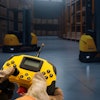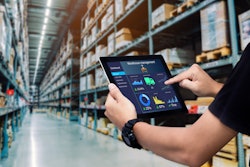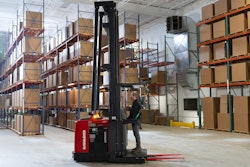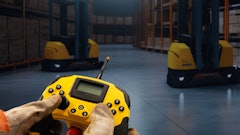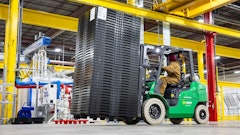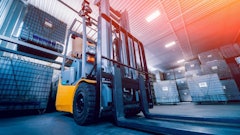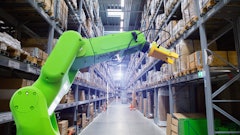
It is projected that the food automation market, which includes storage facilities, will be worth $29.4 billion by 2027. Many business decision makers must keep a keen eye to the future, watching market trends in an attempt to balance current operations and prepare for growth in a complex market. An investment in automated warehousing is a logical step in streamlining internal operations.
When beginning the journey to warehouse automation, it is important for today's food and beverage leaders to decide if they plan on retrofitting an existing facility or investing in an entirely new build. With trends like ever-increasing SKU growth, obsolescence, and faster innovation cycles, it can be a difficult and intimidating road for first time automation customers. Here are some key considerations when investing in warehouse automation:
- Pick a data-centric automation vendor
A worthy automation partner will make data an absolute when assessing potential areas of a warehouse that would benefit from automation. From the proper analysis of data, a vendor should be able to completely customize and design a system that will fit specific and unique needs, including temperature controlled storage options. Even before deciding whether to retrofit an existing facility or to invest in a completely new build, the right partner will suggest designs created from thoroughly interpreted metrics.
- Set realistic expectations
Automation is normally a multi-million dollar investment, and decision makers often share concern over the delivery of positive payback and overall financial success, especially when big financial promises are being made to investors and boardrooms. Setting realistic expectations from the infancy of a project buffers frustrations and prepares investors for long term results. For example, the first year of implementation should be considered a transitory phase where not only is the system itself being commissioned, but where employee preparation and familiarization with the system and how it operates should occur. Positive payback will be achieved with consistency and patience.
- Develop an execution plan
While automation does aid in the overall goal of future-proofing operations, it won't be successful if those operating the systems are not prepared and well trained. It is critical for companies to be prepared to run and operate the automation system during commissioning. Vendor technicians are there to commission the system and address problems, not to operate the system as well. Asking them to do so takes away from the progress to fix issues.
One way to ensure that operators are prepared for the new automation implementation is through strategic knowledge management. Having employees learning a new automated system from the very beginning of implementation not only creates comfortability and confidence with the automated operations, but it also creates an intense wealth of tribal knowledge to be inherited by future operators. Exposure to automation is a long-term career boost for many workers on DC floors, and working alongside automation makes the work easier, safer and more enjoyable.
- Choose a vendor that is vertically integrated
Many warehouses have machines that have been implemented over the last 30 years, which creates data integration issues and varying life cycles. For example, a full-scale system may have up to 20-plus different machines, from conveyors to robots to automated storage/retrieval systems (AS/RS), and if these machines came from 20 different companies over a scattered timeline, many challenges like software support and integration arise. Ensuring a long product life cycle through a vertically integrated vendor is a good risk mitigation strategy.
- Factor in the need for temperature-controlled solutions
The cost of construction is significantly higher when building refrigerated or frozen storage facilities compared to ambient structures. It is expected that the cold storage market will increase to over $330 billion by 2030.
With an AS/RS, not only are temperature-controlled warehouses able to handle higher densities of product and high SKU counts, the ability to build higher also enables a smaller overall footprint and the preservation of green space. This consciousness of land use is both environmentally friendly and the utilization of an AS/RS will save investors and businesses on long term costs.
Automating a warehouse addresses difficulties with first-expire/first-out rotation, laborious manual pallet handling and case picking can also be completely or partially eliminated, offering a plethora of benefits including:
● Efficiency gains in reliability and energy consumption
● Improved data collection and utilization
● Decreased touches and opportunities for contamination
With some food, beverage and other perishable items, storage and distribution center temperatures need to be extremely low, sometimes as low as -30°F. Exposing employees to these extreme subzero temperatures creates many safety hazards and can lead to productivity loss. Implementing an AS/RS in temperature-controlled facilities is extremely beneficial to both workers and warehouses that regularly experience high volumes. Adding an AS/RS in a refrigerated or frozen facility not only densifies storage and makes floor workers’ jobs easier, but it can also create more space for other business requirements.
Making the right choice for you
There is no one perfect solution. Consider the pros and cons of building new or expanding old. One of the biggest benefits of new builds is the approach of building a system from the inside out. Creating and building a logistics design and then putting a building around it offers a magnitude of flexibility to build in nearly any desired way. However, new builds often require the purchase of land, high construction costs, and can be time consuming, especially with varying regulations and land management laws. Additionally, new builds are usually not the green option when investing in automation.
Many companies can also investigate retrofitting an existing facility. After all, the main reason for automation investments is to reduce operating costs, and building a new facility is expensive. However, unlike new builds where designs are created from the inside out, retrofits have to have the logistics built inside of existing parameters. Challenges like buildings being too small or not being well suited for applications can sometimes happen as a result. Retrofits also must consider the costs of potential downtime during construction and implementation.
Ultimately, regardless of whichever you choose, investing in warehousing automation is a great step to remain or even become competitive in current and future markets. While no automation implementation road map will be the same from one company to the next, partnering with a strong and experienced player, using a data-centric approach, a smart warehouse execution system (WES) and having realistic expectations can create significant payback within a short period of time.


